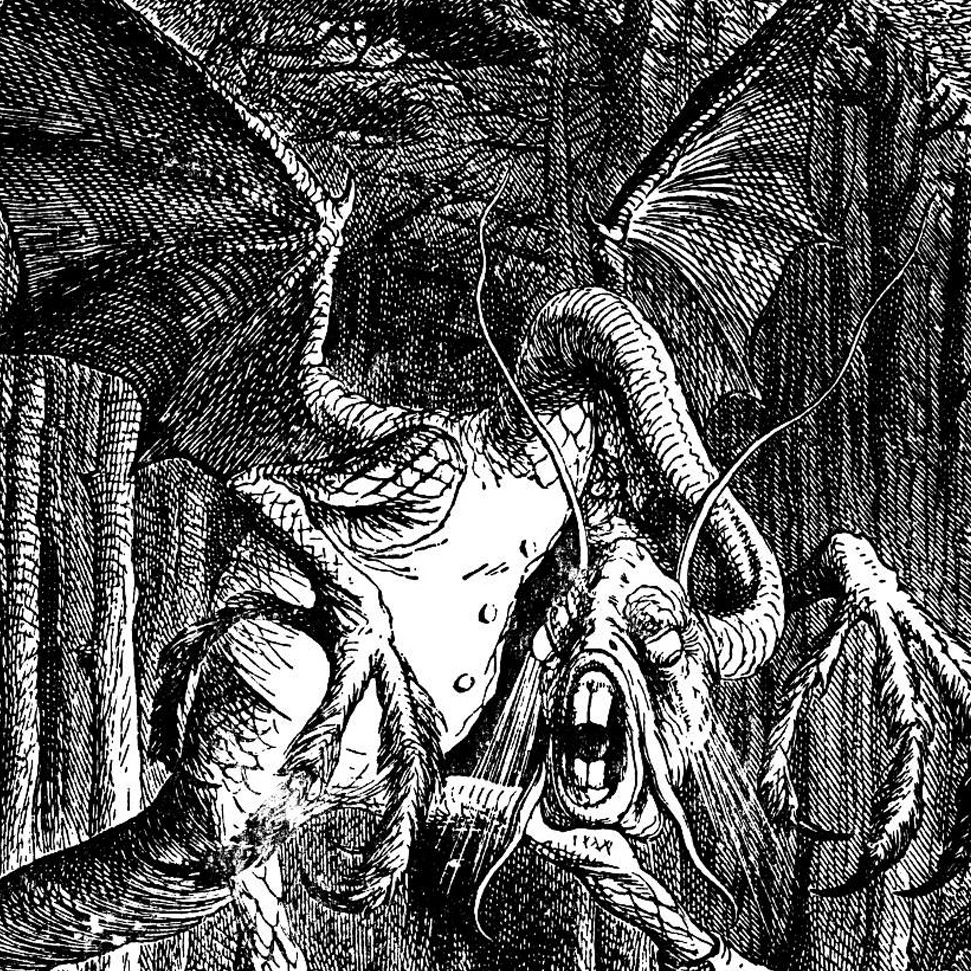'Twas brillig, and the slithy toves
Did gyre and gimble in the wabe;
All mimsy were the borogoves,
And the mome raths outgrabe.
"Beware the Jabberwock, my son!
The jaws that bite, the claws that catch!
Beware the Jubjub bird, and shun
The frumious Bandersnatch!"
He took his vorpal sword in hand:
Long time the manxome foe he sought—
So rested he by the Tumtum tree,
And stood awhile in thought.
And as in uffish thought he stood,
The Jabberwock, with eyes of flame,
Came whiffling through the tulgey wood,
And burbled as it came!
One, two! One, two! and through and through
The vorpal blade went snicker-snack!
He left it dead, and with its head
He went galumphing back.
"And hast thou slain the Jabberwock?
Come to my arms, my beamish boy!
O frabjous day! Callooh! Callay!"
He chortled in his joy.
'Twas brillig, and the slithy toves
Did gyre and gimble in the wabe;
All mimsy were the borogoves,
And the mome raths outgrabe.
A nonsense poem written by Lewis Carroll, Jabberwocky tells of a young man who ventures into a strange, dangerous forest to kill the titular creature that lives there. It originally appeared in Through the Looking Glass and What Alice Found There, the sequel to Alice's Adventures in Wonderland (1865), and as such the creature, along with other elements from the poem, often features in works based on Alice in Wonderland.
The Jabberwock itself is described sparingly, with only a few details given about its nature and appearance, and many of the words used to do so are made up (it is a nonsense poem after all). As such, most depictions of the monster are based on an illustration from Through the Looking Glass by John Tenniel (seen above).
For my own Jabberwock design, I decided to dissect the poem and base my concept off what little I could gleam from it... which, surprisingly, was quite a lot. For one thing, I found that the poem mentions nothing about it having wings or even flying. I also noted the following:-
- The jaws that bite - The fact that the poem draws attention to them suggests that the Jabberwock's jaws are quite noticeable, and like it likes to use them
- The claws that catch - Suggests the creature likes to grab it's prey, which in turn suggests long, dextrous limbs
- Long time the manxome foe he sought - The key word here is manxome, one of the many nonsense words used. Apparently it means 'fearsome', but it's also a portmanteau of 'manly' and 'buxom'
- With eyes of flame - Again, like the mouth and claws, this suggests the eyes are quite noticeable, probably because they are large and possibly glowing
- Came whiffling through the tulgey wood - Despite being another nonsense word, describing the Jabberwocky's movements as 'whiffling' is actually quite telling. It doesn't sound like something that crashes through the trees or comes swooping down; instead it almost sounds like its slithering or gliding.
- And burbled as it came - More of a minor detail really, but as with 'whiffling', the choice of words suggests something about the creature. It's not loud or shrill, suggesting the creature may be slowly stalking its quarry
- and with its head - It has a clearly defined head. ...Ok, I'll admit, I'm grasping at straws with this one
Anyway, that's enough research and exposition. Next post will show the concept and design of the Jabberwock

No comments:
Post a Comment